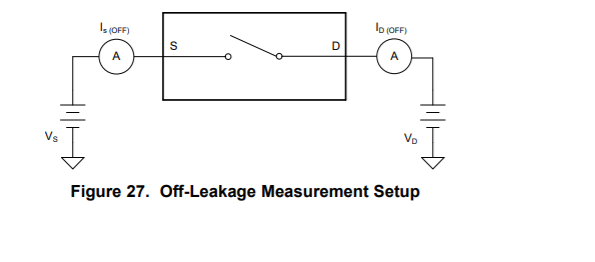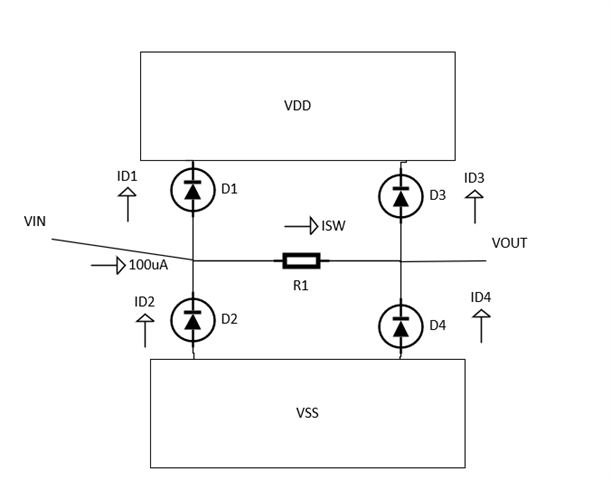I need to measure a large number of high precision 100uA current sources using a mux to route each current source in turn to the measuring instrument. Achieving the lowest possible drain ON leakage of the MUX is essential. Maximum temperature will be 40C. The MUXD04 is the lowest leakage TI part I can find.
1) The datasheet shows graphs for leakage for Is+, Is-, Id+ and Id- but I can't find anything in the datasheet specifing the measurement conditions. In the case of OFF leakage is Is+ measured with the drain at VDD and Is- with Vd at VSS (and vice-versa for Id+/-)? In the case of ON leakage is it where Vs = Vd = VDD / VSS respectively? The Id ON leakage is tthe most important in this application and the graphs show Id(on)+ to be considerably less than Id(on)- so I assume I would need to set the conditions similar to the former.
2) I assume that protection diodes are a significant source of leakage so I have the option to set the supply rails relative to the drain voltage - is there an optimal relationship? Eg. centering the drain voltage midway between the rails so that the top and bottom protection diodes see equal voltages? The source voltages will be at approximately 0V for the measured channel and 10V for the others.
3) By adding a second MUXD04 I could clamp the source voltages for the open switches to a bootstrap copy of the first mux's drain voltage so that all sources are at the same voltage, thus minimising the source - drain leakage of the OFF switches. It would also allow the MUX supply voltage to be set to the minimum (10V).
The off leakage of the extra switch connected to the measured channel's source will add to the error but a) source off leakage is significantly less than the ON draIn on leakage and b) option 2 above may be more effective, perhaps, since all sources see the same voltage as the drain?
4) Is there a better / more suitable part that I should consider?




